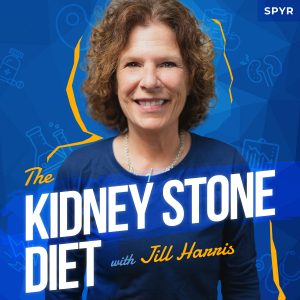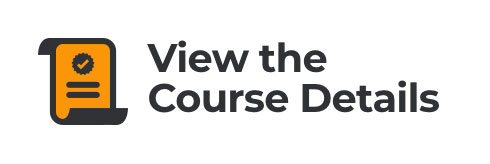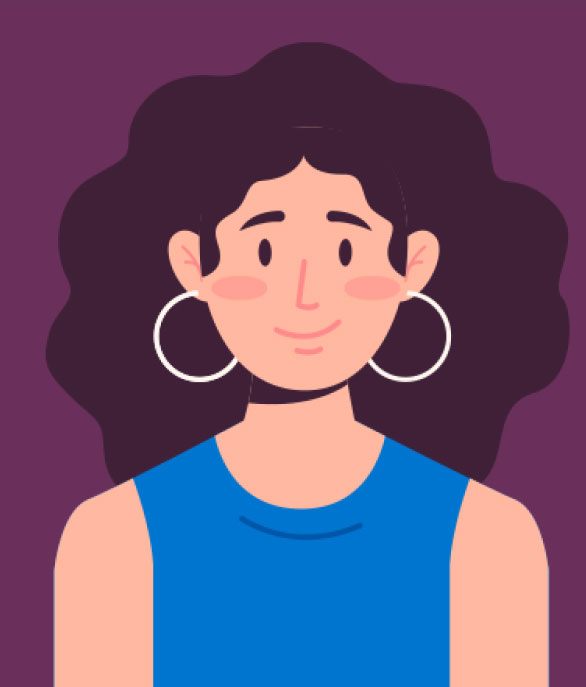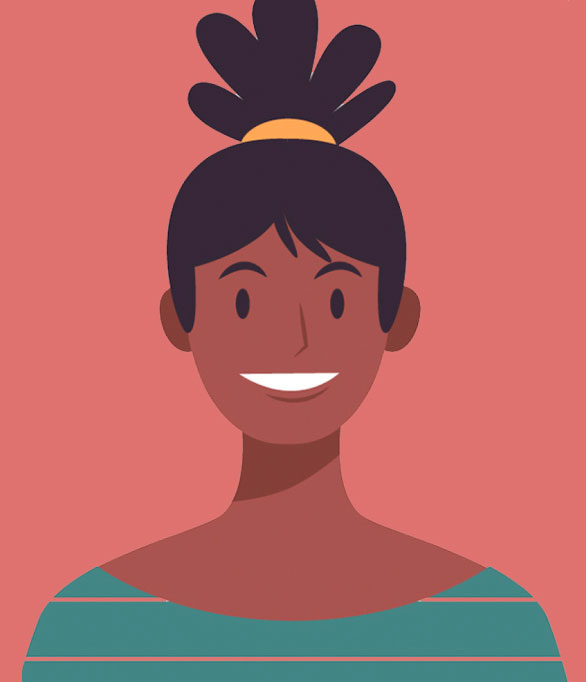This week, Jill talks about the first signs that you may have a kidney stone.
Jeff Sarris: Welcome back to the Kidney Stone Diet podcast, the show about using your kidney stone risk and living your best life. I’m your host and fellow student, Jeff Sarris.
Jill Harris: And I’m Jill Harris, your kidney stone prevention nurse.
Jeff Sarris: So, anyone watching right now will notice that everything looks a little different. Jill, you can’t see it, but there is a new overlay slightly new design here on YouTube. If you’re listening, we also post all of these episodes on YouTube. You can watch us talking to each other through the magic of Zoom over the internet. But yeah, we just have a new sort of simplified design here. I don’t know, I like it. I think more elevated from what we have. We had that like core design for so long, but I don’t know, I’m liking the change. So, you’ll see, Jill, once this episode goes out.
Jill Harris: You like it ’cause it’s black, that’s why. We’re like no colors! No more colors. That’s the framing of this. That’s what!
Jeff Sarris: It literally is, though. So, it’s just simplified, but I think it’s nice. It’ll be a little flexible for other things that we might do in the future with it, too, but how have you been since we hopped on last?
Jill Harris: Well, I was very sick for four days in my bed, doing my calls from my bed. And I say, you know, it’s great being an entrepreneur, except when it’s not. There’s nobody like, “Oh, shit, look at my roster! Wow. Pam, can you take these calls today?” There’s no Pam. There’s no Bob. There’s no anybody. So, it was tough. I had a 101 fever for four days. It would not break. They found nothing wrong with me, but, obviously, I was fighting something, right? So that was a week and a half ago and I’ll tell you what, I’m still recovering. Four days of fever for an old lady will knock you out. So, I’m still recovering, but it also is just a reminder. If you don’t have your health, man, there’s not one thing you have. I was laid up in a bed. There’s nothing. I didn’t get out of a bed for four days.
So, I’m just saying, it makes you think. I’m always trying to remind the audience, if you don’t have your health–and we say this, “Oh, you got nothing if you don’t.” But until you get sick, as people who are watching us, typically, they’re people who have experienced illness, you get that perspective, right? It can be really hard and isolating and lonely and depressing. And to those of us who live by ourselve, there’s nobody here getting a glass of water. I wore Finn out. He tried to get a glass of water, but you know, his paws can’t do it, so I’m just saying it was a long four days for sure. But yeah, I’m just slowly getting better every single day. Trying to get caught up with all the work. So there’s that. I was excited because I finished the project we’ve been working on. I won’t say what it is right now, but yes, very happy. Very happy that that’s finished from my end and now it goes to Dave, our other partner.
So, that was a fun little project that we’ll be rolling out to people. And I’m going to remind people, too, there’s a big segment of our audience here, 64% of you, love our YouTube channel, meaning you watch it, but you’re not subscribed. So can you go to the bottom right hand corner and just press the red button and click it. It does nothing for you. Some people are like, “Jill, what’s gonna happen when I click the button?!” Nothing! But YouTube recognizes our channel as something that people are enjoying and it will show it high up in the ratings when you are searching for kidney stone stuff, it’ll come up quicker. And if you like the video, too, can you please just press the like button? If you don’t like it, that’s okay. You don’t have to press the like button, but we would like you to subscribe. It helps us reach a wider audience and that’s why we’re here.
We want to show people and explain to people that kidney stones can absolutely be prevented. I’ll tell you what, I had two calls today that the patients were told, “My doctor said I’m just a stone maker, Jill.” I hear this several times a week: “I’m just a stone maker.” People, you’re not, even if you have medical illnesses that are predisposing you to form stones, we can at the very least lessen your risk. So, please don’t ever think that you’re just a stone maker and you’re doomed because that means you feel hopeless and I promise you, there is hope. Almost 25 years we’ve been doing this, so what I’m saying is, how could I pay my rent? I know that’s kind of like, but it’s true. How could I pay my rent if this wasn’t successful? Nobody would listen to me. Nobody would come here. So, you can lessen your stone risk. They can be prevented–up to 80% of stones can be prevented–so please know this. All right, what are we doing today, Jeff?
Jeff Sarris: So, today, we were going to start with an FAQ because people who haven’t had a stone or maybe are wondering more about what to expect, like a common question is what is the first symptom of kidney stones?
What are the first symptoms of a kidney stone?
Jill Harris: Oh, what are the first symptoms of kidney stones? Well, it can differ for everybody. Typically, having a little pressure down yonder, little kind of like, not feeling so great. Sometimes, it can be a very sudden and very sharp pain in the lower abdomen, on either side. Some people will have like little chronic twinges here and there and they will simply write it off as “Oh, you know, my hubby and I were gardening today. It must be that.” Until one day, they see blood in their urine. For some people, first, they don’t have nothing. And people will say, “Jill, I know everyone says that pain is the worst pain of ever, ever, ever, ever, but I didn’t have any pain.” And they’ll say it very sheepishly because they feel bad, because all they have ever heard is it’s the worst pain ever. But some people don’t have any warning signs until they have blood in the urine, also known as hematuria.
So, when they look down, they see blood in the toilet. And of course they freak out, rightly so because that’s so scary. So it can differ for everybody. But, typically, the first sign and symptoms is pressure down yonder. It could be vomiting. It could be dizziness. It could be diarrhea. It could be all of those things, but so it’s just different for everybody. So, it’s hard to say. But I think University of Chicago, if you pull it up, they’ll say the first thing they say is it’s going to be pain and pressure. Am I gonna say I don’t believe the University of Chicago? Of course not. I’m just saying that you may have symptoms that are different, that’s all. So, what I hear all day is “It was the worst pain that I’ve ever had in my whole life, Jill!” That’s what I hear all day. It can be the worst pain you’ll ever experience, but, in other people, it’s not much of anything. In some people, it’s a frequent urination, burning when they pee, because maybe the stones passing or they have a UTI because the stone is infected. There’s many different ways people can present.
It’s pretty serious when you think you have to go to the bathroom and then nothing’s coming out. You could be blocked. A fever is a sign you must go to the ER because sometimes–well, lots of times the stones move from your kidney. So you have your kidney and then you have the tube out–for you guys who are listening on Spotify and just listening you can’t see me–but for those of you who are watching you have your kidney and it’s it’s midway down your back, your kidney. And then you have the little tubes that connect your kidney to your bladder. They’re called your ureters and the stones get stuck in the ureter, so it can block your urine and that’s not a good thing. That’s when you get fever. That’s when you’ll have a lot of pain because these little stones are as small as they can be. They are like shards of glass and that’s why you’ll start seeing the blood in the urine, too, and it’s extremely painful. But, typically, the pain comes because the stone is blocking the urine flow. So stones are very serious.
Also, today, I had one patient with sepsis ICU for 10 days. This I hear once a week. They had no signs, but next thing you know, they had a fever they couldn’t get rid of it. They finally go to the ER. They do a CT, and, boom, a kidney stone! So it’s just kind of all over the gold standard. What I hear everyday worst pain in my life. That is what most people will think of when you say the words “kidney stone.” Worst pain in my life. Women will say it’s worse than childbirth. “And Jill I had natural childbirth!” So it can run the gamut. But the tell-tale sign, I would say, is blood in the urine. Get your butt to the ER because also blood in the urine, if it’s not a kidney stone, can signify bladder cancer. So, typically, if you present with blood in your urine, your doctors going to take that seriously. You’re going to be getting a CT or you’re going to have a cystoscopy, which will go check for any anything wrong with your bladder like a little tumor. So the signs and symptoms can be all over the place.
Common ones are, like U of C says, pain and pressure. I’m going to say pain. I’m going to say you can’t pee or have frequent urination, vomiting, diarrhea. Some places will say dizziness. I hear that less from patients. But if you’re vomiting and have diarrhea, you probably do have a fever. Sorry, dizziness. So it’s a lot of different things. But the number one thing I hear every day, in my practice, worst pain I’ve ever had. But just please know you may have a kidney stone and you’re not presenting with that pain. It’s more common than you think. You just don’t hear from the people who don’t have pain because they feel so bad about disclosing that fact. So there’s that. It’s interesting how these tiny, tiny, tiny things can cause such havoc in your kidneys, honestly, and such horrible symptoms for people. They’re terrible things they really are. And every time I get on the phone, and somebody explains, I’ll say, “Okay, tell me your stone story.” I still always shiver a little. It’s not like I’m never used to it. I’m like, “Oh my God, that’s that sounds so awful, right?”
I always have a lot of empathy for patients when they’re telling me their stone story. And for many patients, they didn’t have anything. They were healthy their whole life. They’re eating a healthy diet. I eat too much almonds and spinach and this just came out of the blue. And I think that’s why it’s so scary for patients. The stone can cause pain that can just come out of nowhere. So, it can be very traumatizing for patients. And I’ve had people say, “You’re very dramatic with that.” And I always push back and I say if you heard the thousands of phone calls that I do, you wouldn’t think I’m being dramatic. It’s a real thing and I have a very soft spot in my heart for kidney stone formers. I really feel like they’re the underdog in the medical community and that’s why I’ve dedicated my career to them. Because they’re just, I feel, underserved. That’s just my opinion. I don’t have data to prove that it’s just my opinion and I’m sticking to it.
At what point should someone go to the ER?
Jeff Sarris: Yeah, absolutely. So, you mentioned the fever. You mentioned, maybe a blockage so you can’t urinate. And like that is the question like, at what point should someone go to the ER, if they think they have kidney stones? We’re always like, you were just sick and you had a fever and everything sort of, do you have any recommendations sort of a tipping point of when to when to go and be like, “Okay, I gotta bite the bullet. Go check this out.”
Jill Harris: Yes! So, if you’re in extreme pain that won’t go away, you must get that checked out right away, because that can be many things. So you must get that checked out. If you have a fever that doesn’t go away, like I did, and I went to the doctor, you must go go to the doctor. So, fever. If you can’t urinate, if you have blood in the urine, if you have extreme pain, get your butt to the doctor. And, these days, you’re going to be going to the ER because you can’t even get into a doctor’s office, quite frankly. But yes, if you’re vomiting, you cannot eat. Diarrhea, where you can’t keep anything in it all. After a couple of days of that, and you’re losing weight, all of that, take yourself to the ER.
If you’re having–and that’s an excellent question, Jeff–if you’re having low kind of twinges, “I don’t know if this back pain or kidney stone pain,” you might ride that out for a while. Eventually, though, you will have something–eventually, let me make sure I’m being correct here. Lots of times, people that have had the chronic twitches and stuff and just thinking I’m getting old, it’s my back, they get something else. They get a scan for something else and they have stones and they’re like, “Oh, that’s what I’ve been feeling.” And they’re not presenting with anything else, but if you’re in extreme pain, blood in the urine, you can’t keep food down, you have a fever that won’t go away, you need to see a doctor because you need to rule out kidney stones or anything that you may have. But those are typically kidney stone symptoms. And yes, the blood in the urine telltale sign. Don’t waste time with that. Get your butt to the doctor, please. At least you can rule them out, but that could be a lot of different things and they’re important things to check out. You know, they’re important. You don’t want to let that stuff sit.
Jeff Sarris: Yeah, it’s all scary, but at the same time, it’s scary to know. Sometimes, we’d rather not know, but that’s not the best direction to take things.
Jill Harris: Jeff, I’ll tell you what, I can’t tell you when I was laying in that bed–whenever you’ve had an illness in your life, and then you get anything, so in my case, it was a fever for days–and my stone patients and I empathize. We get this very well–whenever you get something, and you’ve had had an illness, all of that, all that trauma from that original illness, whether it’s stones, cancer, whatever you you get, it’s scary. Laying in a bed sick again because that brings it all to the forefront. It really does. When you are knocked down, no matter what it is, it’s really the scariest thing in your life. And until you’ve been really sick–and really sick doesn’t have to be cancer, it could be kidney stones. It could be chronic diabetes, whatever. A heart attack–until you’ve been really sick, you don’t know what I’m talking about. And I’m thrilled that you don’t, believe me. I’m thrilled that one doesn’t, but once you get sick, you start looking at life a little bit differently. I hope anyway, you really do.
When does health become a priority?
And the reason people are calling me is because they’re like, “Okay, I tried to lose weight. I weighed 250 pounds. I’ve tried to lose weight for decades. But, you know, Ding Dongs are a lot more fun than looking cute in a bikini. Who cares about that?” But when you get sick, well, that prioritizes everything. It’s no longer about who gives a shit what you look like, it’s not about that anymore. It’s like, “Oh, my God, I’m sick. I never want to go through that, again and I will do anything a lady. So tell me what to do and I’m going to do it.” And so that’s the one good thing about getting kidney stones. It gets your butt in gear. And so the Kidney Stone Diet, well, it’s just a healthy diet. We’re asking you to lower your sodium and sugar. So that’s healthy for every damn disease state. Getting enough fluids. Make sure you get calcium, whether it’s dairy or non-dairy for your bones as well. And to lower your oxalate and don’t overeat meat protein. Good enough, but you don’t need to overeat it in mass quantities.
So this is we’re talking about: portion, not perfection. Like my sweatshirt says, eat a wide variety of foods in normal portion sizes. It’s all good advice, no matter what you’re battling. So, that’s one of the reasons I can scream about it for so long. It’s just really a healthy diet. And then all the other things that we teach going around the diet, like portion size, you know, why you’re eating. You’ve got to deal with why people are eating. You can’t just throw a brochure and say, “Stop eating this stuff.” Well, what happens? What am I supposed to do when I’m having a shitty day? An apple ain’t gonna do it, so knock it off. I mean, I would never say that to somebody. “You love Jujubees, have an apple!” Somebody’s gonna hit me. Nobody’s gonna do that. That’s not a good swap out.
So my job is to help people change their habits, realistically. I have to listen to people. “Jill, that’s not going to work. Let’s try something else.” “Okay, let’s try this.” So you’ve got to swap out habits in order to gain new habits, you’ve got to swap out the bad ones. You can’t just say stop all your bad habits. You’ve got to give people a plan and give them something comparable, just healthier, right? It can’t be a total black-and-white thing. Nobody can do that. It’s why diets fail. It’s complicated. What I do, even though I sound like a street girl, most of the time, it’s complicated. It’s listening to people. It’s talking to people together. It’s a relationship. I have a relationship with my patients and you’ve got to listen to them to see what’s going to work so they can succeed, right? So it’s very complicated, actually.
Jeff Sarris: Yeah, and the listening part, I love it. It feeds perfectly into the Prevention Course. If you want to work with Jill in a group setting, there’s the Kidney Stone Prevention Course at kidneystonediet.com. That includes accountability calls. The first month is baked into the course itself and then it’s $19 a month. Beyond that, if you want to continue every week, Jill does a call with a group of patients, members, however you want to look at it, but you get to interact directly, and you’re able to listen and hear countless people with countless stories that informs everything you do to this day. So, it’s hugely valuable. And I know that’s the part of all of it that keeps you coming back, I guess.
Jill Harris: I love it because we’re building relationships with one another. The people in the accountability group, they bought the course, and those are a set of videos that you learn about the Kidney Stone Diet, but the real magic happens in those calls. And, of course, you can cancel after the first month you get it with the course and then cancel if you don’t want it, but the people that stay, 100 pounds lost, 50 pounds lost, they’re in there also to lose weight. So, you’ve got to practice. It’s one thing to get information with any kind of diet change you want to make and then you’ve gotta practice it for the rest of your life. That’s what you have to do. Also, these changes, you know, the diet industry wants us to think that, “Oh, they happen so quickly.” I always tell my patients think six months to a year, so you can manage your expectations. You’re going to go back to your old habits a million times, and that’s okay. I expect that because I don’t even consider it failing. It’s you learning and growing and adapting to the new changes you’re trying to make. You think you’re going to be perfect at that right away after you take the Kidney Stone Prevention Course?
No! You need to practice it! Everybody is very smart. You know that Doritos are not healthy and you know that kale friggin’ is healthy. Why are you reaching for the Doritos? There’s a million reasons. Well, we want instant satisfaction. Kale ain’t gonna friggin’ do it for most of us. So, if you’re pissed off, frustrated, depressed, like me, I’m crunching. I mean, the Doritos are going to make you feel better like that. And then you’re gonna go right down, and you’re gonna feel bad about yourself again, and you’re going to try to make yourself feel better with more Doritos, whatever food is used as a coping skill. So what we do in the accountability group is support each other and figure out different coping skills. We are family there and often that group, we will be in there for two hours because there’s a lot of things going on there. We talk about some wonderful, heavy duty things, but you’ve got to get to the reason, listener. You’ve got to get to the reason why you’re eating now what you’re eating. Nobody gives a damn. You want a snow cone? Have a snow cone and get right back on track. But why are you choosing the foods you do? And that takes time and that takes practice. All right, I’m done.
Jeff Sarris: I think that’s a perfect spot to wrap. So, if you have a question that you would like to have featured on a future episode, the number is 773-789-8763. And we would love to have your voice. For everything, you can go to kidneystonediet.com and find the prevention course, the meal plans, the free email newsletter that comes out every Sunday to keep you on track for your week, and all the free content. There’s tons of free content everywhere, everywhere you look. So, we just want to help as many people in as many different ways as we can because some people prefer to read listen, watch, whatever it is. There’s the Facebook group for the direct interaction with what– around 10,000 people in that group and the production?
Jill Harris: There’s sixteen thousand people!
Jeff Sarris: Yeah, I haven’t kept up on the count. There’s so many people just to realize you’re not in it alone. With that, I think we should wrap for this week. We appreciate you tuning in, liking, subscribing, giving it a thumbs up, and we will see you next time.
Jill Harris: Thanks, guys. Thanks so much. Have a great day.














Leave a Reply